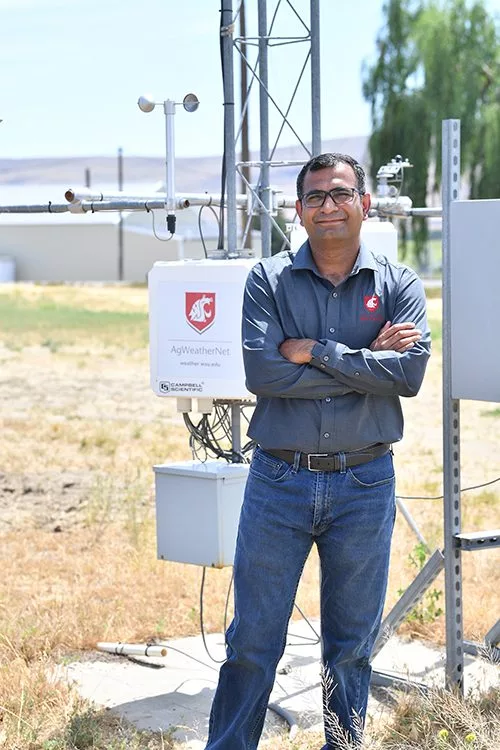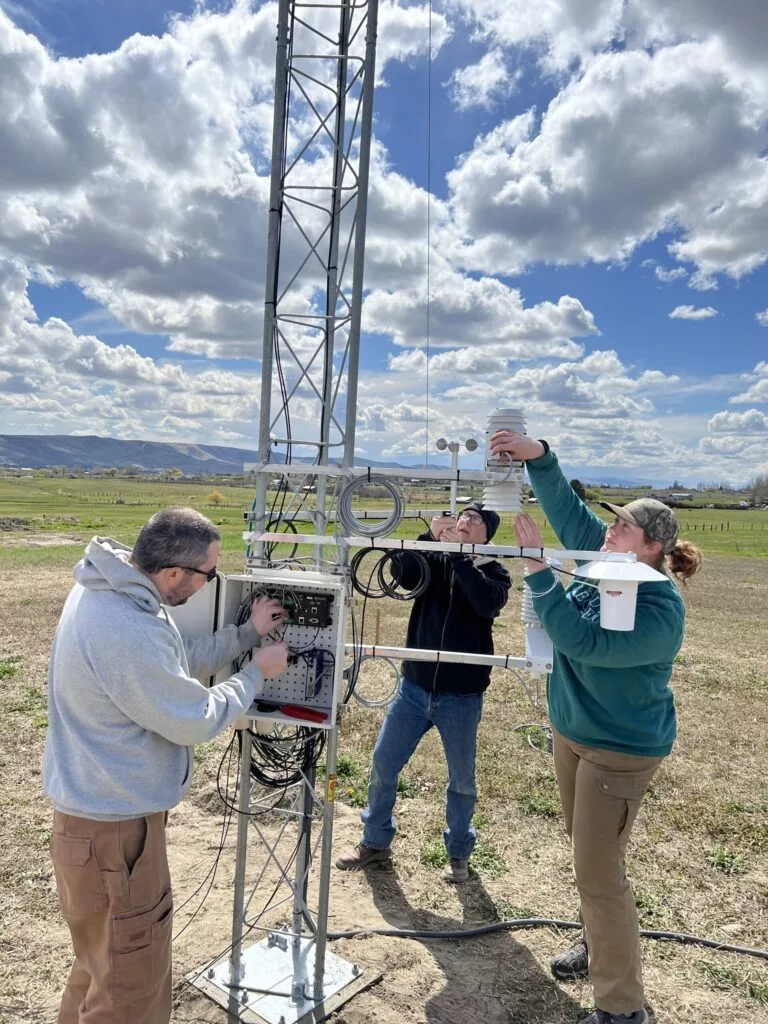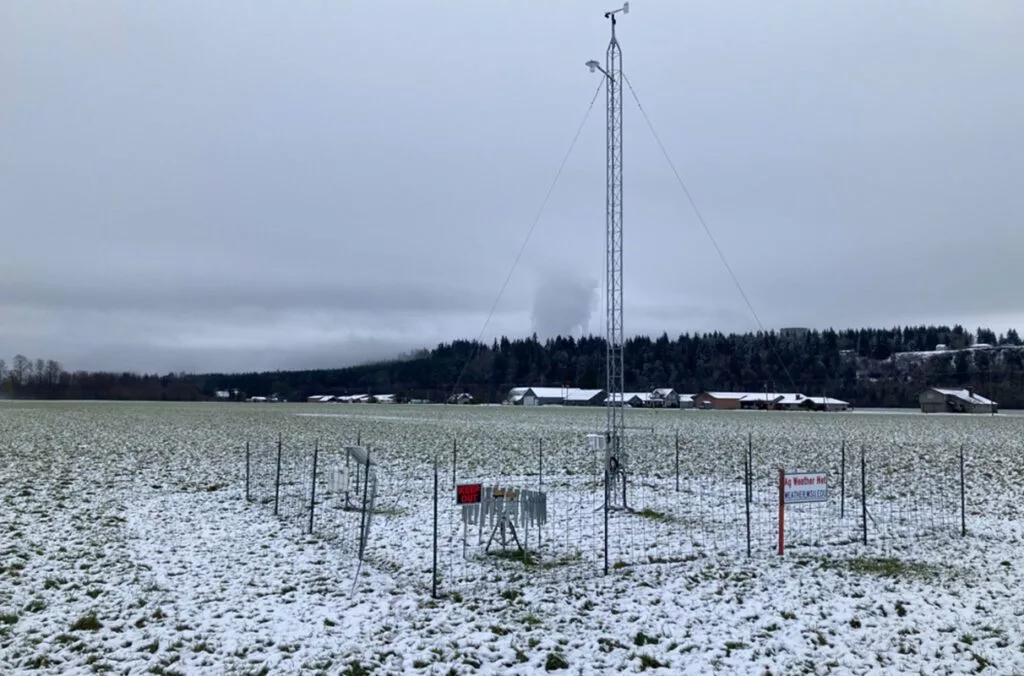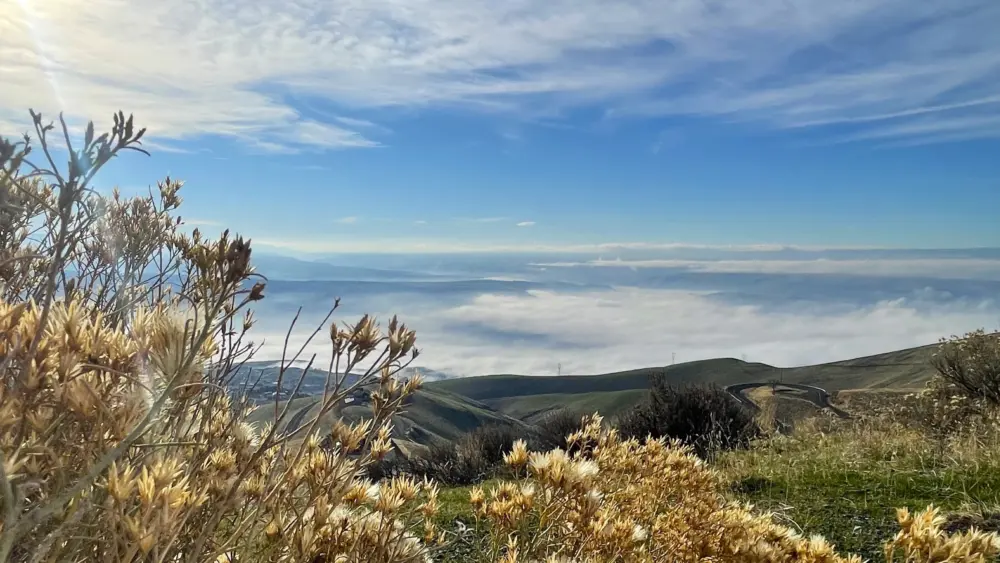
PULLMAN, WA – Scientists at Washington State University will help Northwest high school students gain hands-on experience in weather monitoring as part of a modernization of the state’s automated weather network.
Funded by $1.5 million from the Washington State Department of Agriculture, the project upgrades WSU’s AgWeatherNet, a system of more than 360 weather stations serving farmers and the public, and connects it with educators and students in 15 Washington school districts.
“We want to build the weather network of the future and the next-generation Washington workforce,” said project leader Lav Khot, AgWeatherNet director and associate professor in WSU’s Department of Biological Systems Engineering.
Gathering data statewide every 15 minutes, AgweatherNet collects dozens of metrics, from air temperature, rainfall, and wind speed to humidity and leaf wetness. Shared online and through digital decision tools, this data helps growers know when to water, mitigate cold or heat stress, and manage pests and diseases.
The bulk of the network is made up of six-foot-tall legacy stations introduced in 2008, complemented by privately owned stations. Khot and his team of meteorologists have been working to upgrade older stations to new, 33-foot “Tier 1” towers with added capabilities. The funding allows him to add more than 35 upgraded towers, bringing the statewide tally to 100over the next two years.

The new towers measure weather more accurately over a wider scale, reaching out as far as 25 miles, allowing better forecasting of potentially damaging temperatures, winds, and storms.
Equipped with more sensitive equipment for measuring weather, as well as wildfire pollution and air quality, the taller towers are better at detecting inversion, or atmospheric layers that are warmer than at the surface. That difference is key to helping growers manage adverse weather conditions that can cause severe crop loss in apples, cherries, grapes, and berries. Inversion detection will also assist with pesticide spray advisories, leading to better crop protection and reduced drift.
Improving drought forecasting in Washington, the project also adds four-depth probes to collect soil moisture and temperature data at more than 220 stations.
“State-of-the art hardware means more reliable data for Washington growers and residents,” Khot said. “With it, they can make smarter decisions about farm practices that preserve crops, resources, and human health.”
Fifteen new legacy stations will also be placed at high schools as part of the project, joining 10 existing AgWeatherNet school stations. The WSU team is working with WSDA to identify school districts serving overburdened communities. University educators will then partner with high-school agriculture and science teachers and AgWeatherNet engineers to develop curriculum that helps students and teachers learn about, operate, and maintain the stations.
“We’re very excited to engage with teachers and students using AgWeatherNet technology, allowing them to explore air quality, drought, wildfire impacts, and other challenges,” said Nancy Deringer, associate dean of Student Success and Academic Programs in WSU’s College of Agricultural, Human, and Natural Resource Sciences. “This project gives students real-life hands-on experiences and puts them at the controls of a modern weather station. They’ll be able to see how weather data is collected and learn how weather impacts crops grown where they live.”
The project, she added, is an excellent example of how WSU reaches out to communities and inspires student curiosity about future careers.
Work has already begun to source and install the new stations and equipment. Collaboration with schools is in progress, with installation expected to be complete by spring 2026.
WSDA recently surveyed and interviewed more than 400 farmers on what they need to remain resilient through climate change.
“We overwhelmingly heard that growers want enhanced weather data, better climate projections, and more data-based decision-support tools,” said Dani Gelardi, WSDA senior soil scientist and climate coordinator. “These AgWeatherNet upgrades are an enormous step towards ensuring that Washington agriculture remains viable and vital through current and future challenges.”
Helping crop growers, cattle feeders, and agricultural workers, AgWeatherNet also benefits public agencies in Washington and logs hundreds of thousands of website visits annually.
“Thanks to WSDA, we can now inspire future generation of scientists, growers, and leaders as we put in place tools for better monitoring,” Khot said. “Weather affects everyone, and the more we understand it, the more we can safeguard our economy, environment, and health. This work is an important step in that direction.”
Learn more about AgWeatherNet at weather.wsu.edu.
• Contact: Lav Khot, WSU AgWeatherNet Director, 509-335-5638, lav.khot@wsu.edu





